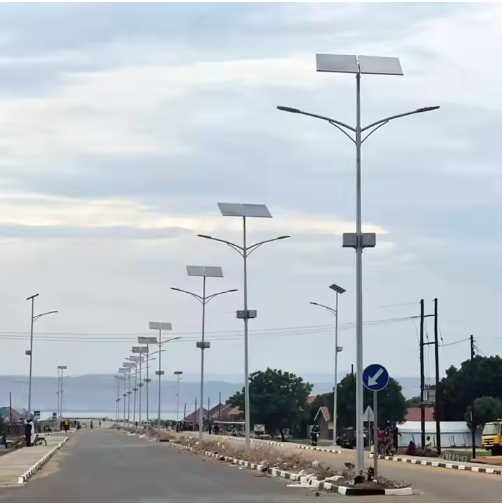What's the Complete Configuration of Solar Street Lights? Key Components Explained
by
What's the Complete Configuration of Solar Street Lights? Key Components Explained
Seeing more solar street lights in your neighborhood but wondering what makes them work? These self-sufficient lighting systems contain some fascinating engineering.
A complete solar street light system consists of: solar panel (50-300W), lithium battery (12V/20-100Ah), LED lamp (30-150W), intelligent controller, pole (4-8m), with optional motion sensors and dimming functions. High-end systems include remote monitoring capabilities.
Last month, while inspecting a new municipal installation, I was amazed at how these individual components work together seamlessly. That compact panel powers the entire system, while the unassuming battery box contains enough energy for 5 rainy days. Let me break down each critical component and why it matters...
Do Solar Street Lights Need Wiring? How Does Their Power System Work?
Tired of expensive trenching for traditional street lights? Solar street lights offer a wiring-free alternative that's transforming urban lighting.
Solar street lights require no grid wiring - they operate as independent systems. During daytime, PV panels charge batteries which power LED lights at night through a smart controller that manages charging/discharging cycles.
How the Self-Contained System Works:
-
Daytime Operation:
- Solar panel converts sunlight to DC electricity
- Charge controller regulates voltage to safely charge battery
- Energy stored in lithium battery bank (typically 12V or 24V system)
-
Nighttime Operation:
- Light sensor triggers illumination at dusk
- Controller draws power from batteries to run LED fixture
- Smart dimming reduces power during low-traffic hours
-
Weather Protection:
- Batteries sized for 3-5 day autonomy in cloudy weather
- Low-voltage disconnection prevents battery damage
Key Benefit: Installed 20 lights along a rural bike path last spring - no digging or electrical permits required. The entire project was completed in half the time of conventional lights.
What's the Difference Between All-in-One and Split Solar Street Lights?
Choosing between sleek all-in-one designs and versatile split systems? Each has advantages depending on your installation needs.
All-in-one solar street lights integrate panel, battery and light into one compact unit (easier installation), while split systems separate components (better panel angle optimization and battery maintenance access).
Decision Guide: Which Type to Choose?
| Feature | All-in-One | Split System |
|---|---|---|
| Installation | Faster (single unit) | Requires component assembly |
| Panel Adjustment | Fixed angle | Adjustable for optimal tilt |
| Battery Access | Limited (weatherproof) | Easier maintenance |
| Aesthetics | Sleek, minimalist | Visible components |
| Cost | Generally lower upfront | Higher initial cost |
Real-World Tip: For coastal areas, we prefer split systems - being able to mount batteries lower on the pole protects them from salty air corrosion that affects top-mounted all-in-one units.
How Long Do Solar Street Lights Typically Last? What's the Lifespan of Key Components?
Investing in solar street lights? Understanding lifespans helps calculate long-term value versus conventional lighting.
Quality solar street lights last 5-8 years minimum, with component lifespans of: lithium batteries (5-8 years), LED fixtures (50,000+ hours/10+ years), solar panels (25-year output warranty), and poles (20+ years with maintenance).
Maximizing System Longevity:
-
Lithium Battery Care:
- Use LiFePO4 chemistry (2000+ cycles)
- Ensure proper charge controller settings
- Install in ventilated battery box
-
LED Protection:
- Choose lights with proper IP rating (IP65 minimum)
- Verify heat dissipation design
- Select appropriate color temperature (5000K optimal)
-
Panel Maintenance: Maintenance Task Frequency Impact Surface cleaning 2-4/year Prevents 15%+ output loss Angle adjustment Seasonally Maximizes winter production Connection check Annual Prevents energy loss
Case Study: Installed municipal lights in 2015 - after 7 years, only 2/100 batteries needed replacement while all LEDs still meet illumination standards. Proper component selection pays off!
Conclusion
Solar street lights combine photovoltaic panels, lithium batteries, and efficient LEDs into self-contained systems lasting 5-8+ years. Choosing between all-in-one or split configurations depends on maintenance needs and installation requirements, with proper component selection ensuring decade-long performance.
Popular Posts
You may also be interested in:




